Our Painted Tipis Buffalo Teepees Spirit Lodge Lake Manitoba Tipis Boreal Land Painted Tipis Traditional Designs Contemporary Designs Metis Style Tipis Hunting Tipis Painted Logos Tipi Liners Summer and Winter Liners Decorated Liners Poles and Stakes Tipi Poles Stakes, Lacing Pins Accessories Tipi Camping Tipi Care AUTHENTIC Plains Indian Artifacts Beaded Buckskin Dress Beaded Leggings Beaded Vests War Shirts Weapons Beaded Awl Cases Pipe Bags  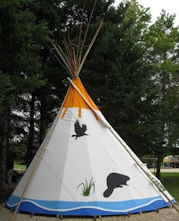     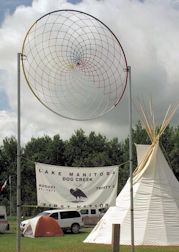 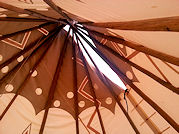 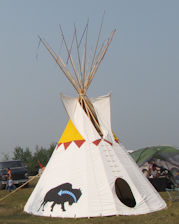  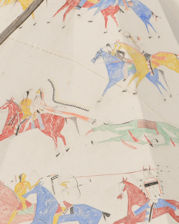 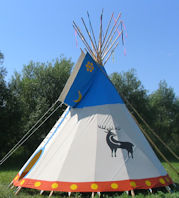 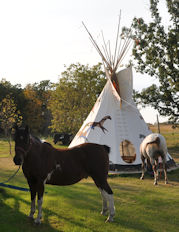
|

Home of the Painted Teepees Since 1992
Made in Canada
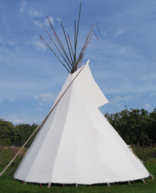 |
The wigwam, traditionally used by Eastern Woodland Indians, evolved into the tipi as tribes like the Sioux, Arapaho, and Cheyenne adapted to life on the Great Plains, replacing birch bark with buffalo hides and adding smoke flaps for wind protection. Unlike a true cone, the tipi features a tilted, egg-shaped design with an off-center fireplace, maximizing interior space. With various styles based on differing pole foundations, the tipi serves not just as a shelter but as a spiritual sanctuary that embodies a deep connection to Mother Earth, deserving respectful treatment. Our tipi expo at the Paris Native American Museum |
Hand Made, Well Made, Strong
Made
|
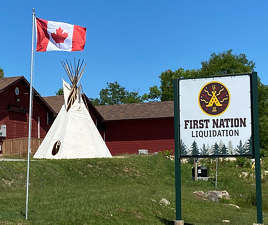 Our teepee at Muskoka First Nation,, ON Photo North45 Communications Inc |
![]()
| A Tipi Has 4 Components. Choose each one separately to fit your needs - A tipi cover, it comes in two styles and many sizes - A liner, like a shorter wall inside the tipi, important but not alway necessary. - Poles, stakes and pegs - Artwork!. Not a component per say, but looks so great! |
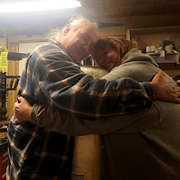 Shared Teepee Happiness |
|
How to Order, Step by
Step! Step 1 - Choose Your Tipi Style Woodland Tipi Style vs Grassland Tipi Style The Grassland teepee, reflecting the traditional Plains Indian tipi style from the Dakota (Sioux) and Nakoda (Assiniboine), features a tripod pole frame with elongated, tapered smoke flaps, while the Woodland teepee, inspired by a historical 19th Century Plains Cree tepee from Fort Qu'Appelle (Saskatchewan), showcases a similar framework but with shorter, elevated smoke flaps, both distinctive in their architectural nuances. Which One To Choose? The Grassland is ideal for open plains and coastal regions, while the Woodland Teepee is more appropriate for forested areas like the boreal forest and even the tundra, as each design caters to the specific environmental needs of its respective habitat. |
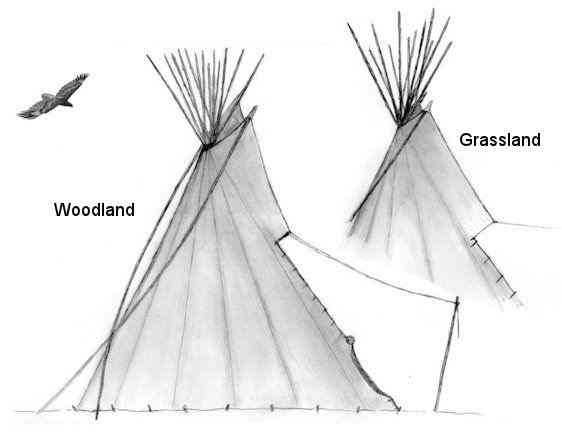 |
 Woodland Style |
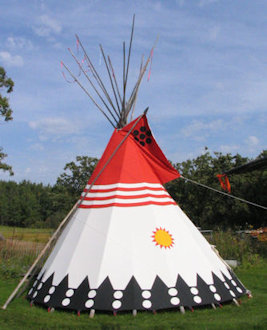 Grassland Style |
![]()
| Step 2 - Choose Your Tipi Size Prices in Canadian Dollar. |
 |

|
Free Gift with Tipi Purchase* The Tipi, Portable Home of the Plains Indians This saddle-stitched pamphlet provides a description of how different tribes made their now-iconic dwellings, how they used them historically, why they were so important to the culture of the Plains tribes, and how people still use tipis today. Illustrations and photographs in this handy and concise booklet help you understand the refined simplicity of these structures. 16 pages. |
| *Our welcome gift package also includes our instructional CD, sage for the smudging ceremony, and ribbons for your poles. |
|
| Step 3 - Proceed with a
liner, click here Step 4 - Skip the liner, and look for poles, click here Step 5 - To look at our painted tipis, click here To visit our Native American Gallery, click here |
| Assiniboine Tipis is a proud supporter of these Aboriginal associations |
   |
Assiniboine Tipis
PO Box 649, Lundar, Manitoba R0C-1Y0
Phone: 204-762-5523
Canada
Contact Us
About Us Policy